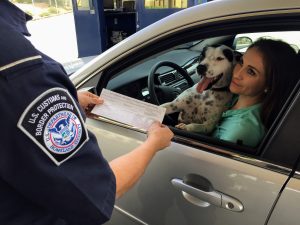For companies with a global reach, the L-1 classification of visa for intracompany transferees is essential for fulfilling the temporary business immigration needs of specialized and managerial personnel.
In this two-part blog series, we will go over some common questions and answers about the L-1 visa. If you have any questions about the L-1 visa or would like legal counsel regarding your immigration needs, please contact Saleh & Associates today.
What is the L-1 visa?
The L-1 visa is a nonimmigrant work visa for intracompany transferees. It allows certain employees of international companies with offices in the US and abroad and who have worked for that company for a minimum amount of time to enter the US for the purpose of conducting work for that company.
Which companies can utilize the L-1 visa?
In order for a company to utilize the L-1 visa, they must be an international company with offices in both the US and abroad. These are known as “qualifying organizations.” The US-based organization and the office abroad must have one of four qualifying relationships:
- parent company
- branch
- subsidiary
- affiliate
- 50/50 joint venture
While the employer does not have to be involved in international trade, it must actually be engaged in business in both the US and in at least one office abroad throughout the duration of the L-1 employee’s stay in the US. A foreign company without a US affiliate may also utilize the L-1 visa if they are sending an employee to the US in order to establish a US office.
Which employees are eligible?
In order for an employee to qualify for an L-1 visa, they must have continuously worked for the petitioning employer for at least one full year in the past three years prior to their admission to the US.
There are two different types of L-1 visas: the L-1A and the L-1B.
L-1A — This category is reserved for executives and managers. These employees must have been working in an executive or managerial capacity for at least one year in the past three, and seeking to enter the US to serve their company in an executive or managerial capacity. Executive capacity is defined by the USCIS as having “the ability to make decisions of wide latitude without much oversight.” Managerial capacity is defined by the USCIS as “the ability of the employee to supervise and control the work of professional employees and to manage the organization,” as well as the ability to manage essential functions of the organization without much oversight.
L-1B — This category is reserved for employees with specialized knowledge of the organization. In order to be eligible, the employee must have worked for the employer for at least one continuous year in the past three providing services in a specialized knowledge capacity. USCIS defines “specialized knowledge” as “special knowledge possessed by an individual of the petitioning organization’s product, service, research, equipment, techniques, management, or other interests and its application in international markets, or an advanced level of knowledge or expertise in the organization’s processes and procedures.”
For more useful questions and answers about the L-1 visa for intracompany transferees, please check back soon for Part 2 of this blog. If you have more questions or would like direct help with your specific immigration needs, contact the law office of Saleh & Associates today.







